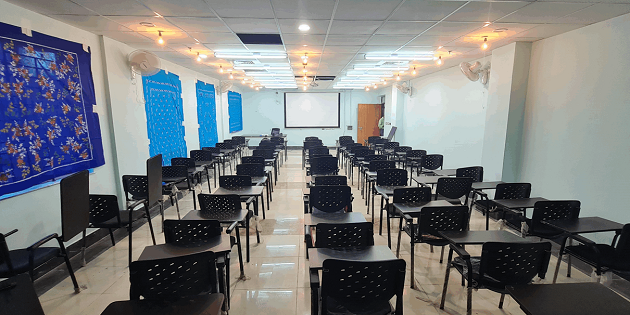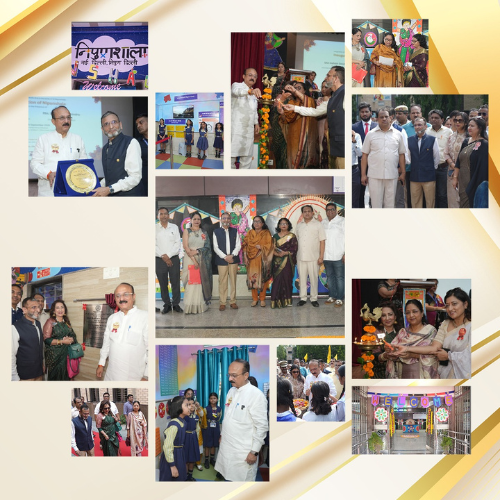
A Novel Lighting Assessment Method Proposed by Researchers from West Bengal for Indoor Lighting
A group of researchers has developed an innovative indoor lighting evaluation methodology that can redefine how indoor lighting solutions are chosen and evaluated in educational environments, including college classrooms. Their methodology was developed during the execution of the project entitled ‘A framework for assessing the feasibility of indoor lighting solution for an archetype medical college classroom in Eastern India’ in academic year 2024 – 2025.
Their research emphasized the integration of human factors in classroom lighting – something that is usually neglected in interior design and lighting product selection. Their framework, named the Joint General Model for Comprehensive and Holistic Lighting Assessment (JGMCH Framework), also implicitly refers to the Jhargram Government Medical College and Hospital, where this framework was first conceptualized. The JGMCH Framework was introduced as a ‘pragmatic-cum-productivist tool’ for upgrading current practices in lighting design, and its three broad criteria, Energy Efficiency and Financial Aspects (EFFA), Visual and Non-Visual Effects (VNVE), and Occupants’ Perception and Comfort (OPC), integrate subject assessment, lighting, electrical, and financial parameters under one holistic framework.
The researchers equipped model medical classrooms at the Jhargram Government Medical College and Hospital with conventional tungsten filament-based incandescent bulbs, fluorescent tubelights, and LEDs, and made measurements of electrical and lighting parameters in situ. They also administered questionnaire-based surveys with student participants in the selected model medical college classrooms between September 2024 and January 2025 to record their subjective assessments of the lighting conditions of the indoor environments. They evaluated the subjective responses, performed statistical analysis, and graded the lighting solutions. The lighting system with incandescent bulbs received the lowest rating of 3.15 out of 5, and the LED lighting system of a lecture theatre was graded 4 out of 5. They also noticed that LED lighting with a correlated colour temperature value of 4816 K maximized occupants’ comfort.

Evaluating candidate lighting solutions, the researchers concluded that classrooms fitted with LEDs and fluorescent lamps had lower energy and maintenance costs, good light levels, and satisfactory colour perception. Their research also suggested that facility managers in colleges should aim to replace old, outdated, and ineffective lighting products with new and energy-efficient ones.
Among the researchers, the principal investigator is Prof. (Dr.) Susmita Bhattacharya, M.D., Ph.D., who, with over 12 years of Professorial experience, serves as the Principal of the Jhargram Government Medical College and Hospital under the West Bengal Medical Education Service (WBMES). Among the four co-investigators, Dr. Abhishek Das, M.D., serves as an Associate Professor, Dr. Shibsankar Mahata, M.D., as an Assistant Professor, and Dr. Sujash Biswas, M.D., as a Professor, all in the Department of Forensic Medicine of the same institution. Another co-investigator, Sourin Bhattacharya, M.Tech., has been a Visiting Faculty at the School of Illumination Science, Engineering and Design, Jadavpur University, since 2025, where he teaches at the postgraduate level and is pursuing his Ph.D. focusing on road lighting simulation and modelling under the supervision of Dr. Parthasarathi Satvaya, the Director and Assistant Professor of the School.
According to Sourin Bhattacharya, their study was conceptualized to address research gaps in lighting ergonomics and on ‘interlacing energy performance, financial incurrences, ergonomics, and visual comfort in a unified evaluation model’. It was also aimed to fill a crucial regulatory gap, as the existing Indian lighting standard for classrooms is the Code of Practice for Lighting of Educational Institutions’ (IS: 10894 – 1984), which needs to be revisited and revised to incorporate guidelines and checklists for human-centric and energy-efficient lighting design.
The researchers published their findings in the prestigious ‘Energy and Buildings’ journal of Elsevier in March 2025 by an article entitled ‘A novel framework for the assessment of indoor lighting solutions and its application for model learning spaces of a higher educational institution considering energy efficiency and human factors’ (https://doi.org/10.1016/j.enbuild.2025.115625) and made an auxiliary publication in the notable ‘Facilities’ journal of Emerald Publishing in April 2025 by an article entitled ‘Evaluation of candidate lighting solutions for a model medical college classroom and insights for lighting system design in educational institutions’ (https://doi.org/10.1108/F-10-2024-0146).
As India transitions towards carbon neutrality and sustainable infrastructure, the JGMCH Framework, integrating lighting, ergonomics, and facility management, would be a necessary tool for lighting practitioners to assess indoor lighting solutions and ensure that lighting systems cater to the visual and non-visual requirements of students in college classrooms.




